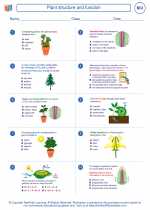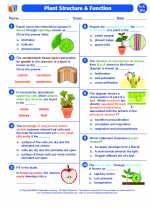Interference in Biology
Interference in biology refers to the phenomenon where two or more waves superpose to form a resultant wave of greater, lower, or the same amplitude. In the context of biology, interference can be observed in various biological processes such as genetics, ecology, and sensory perception.
Types of Interference
There are two main types of interference:
- Constructive Interference: Occurs when two waves are in phase (crest meets crest or trough meets trough), resulting in a wave with greater amplitude.
- Destructive Interference: Occurs when two waves are out of phase (crest meets trough), resulting in a wave with a lower amplitude or complete cancellation.
Examples of Interference in Biology
1. Genetics: In genetics, interference refers to the phenomenon where the occurrence of a crossover event in one region of a chromosome affects the likelihood of a crossover in an adjacent region.
2. Ecology: Interference competition occurs when individuals of different species directly antagonize or inhibit each other's access to the same resource.
3. Sensory Perception: In sensory systems, interference can occur when two or more stimuli compete for neural processing, leading to effects such as masking or distraction.
Study Guide
To understand interference in biology, students should focus on the following key points:
- Definition of interference and its relevance in biological processes.
- Differentiating between constructive and destructive interference.
- Examples of interference in genetics, ecology, and sensory perception.
- Real-life applications and implications of interference in biological systems.
Understanding interference is crucial for comprehending various biological phenomena, and mastering this concept will enable students to analyze and interpret a wide range of biological processes.
.◂Biology Worksheets and Study Guides High School. Plant structure and function

 Worksheet/Answer key
Worksheet/Answer key
 Worksheet/Answer key
Worksheet/Answer key
 Worksheet/Answer key
Worksheet/Answer key
 Vocabulary/Answer key
Vocabulary/Answer key
 Vocabulary/Answer key
Vocabulary/Answer key
